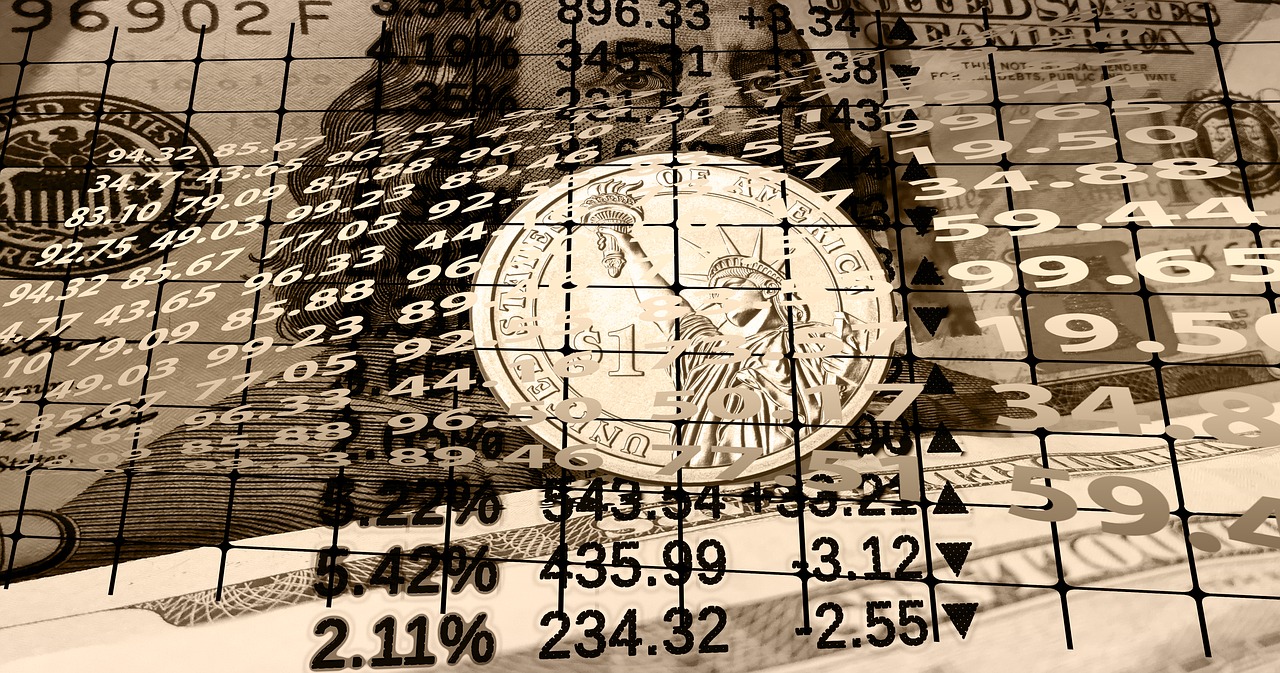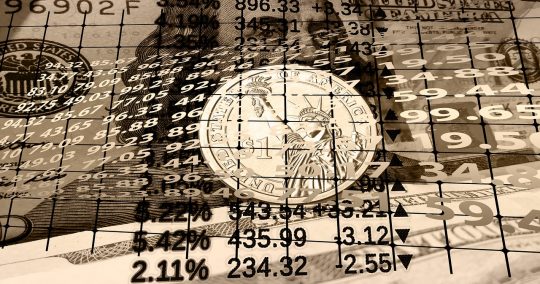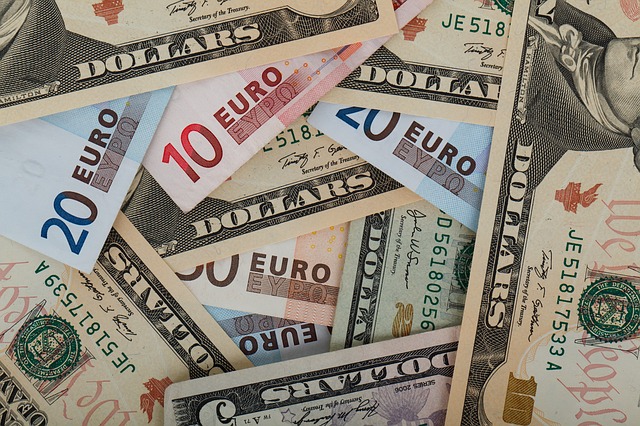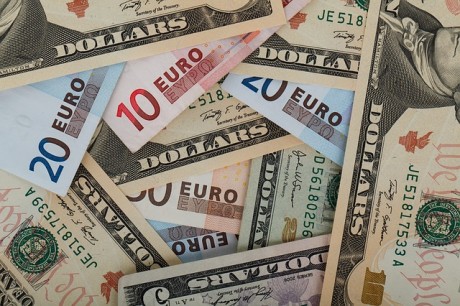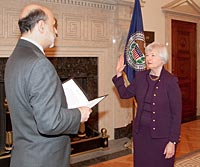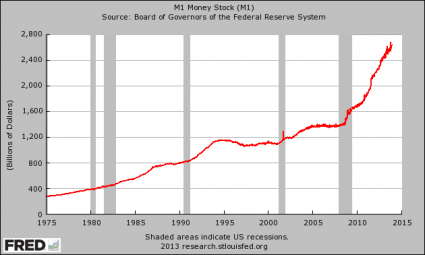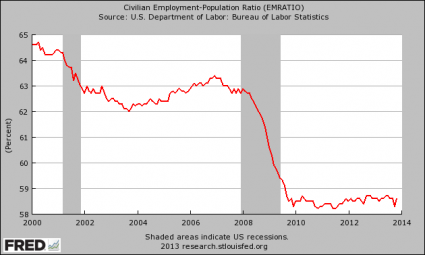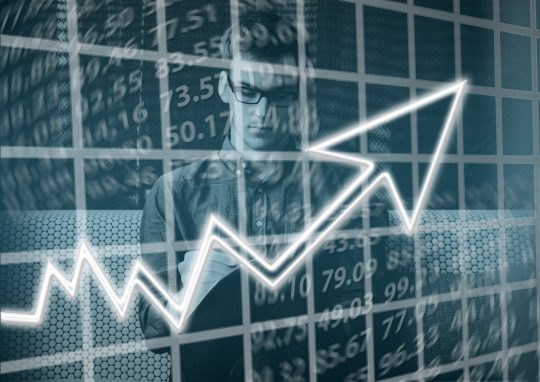 The primary reason why stock prices have been soaring in recent months is because corporations have been buying back their own stock at an unprecedented pace. In fact, the pace of stock buybacks is nearly double what it was at this time last year. According to Goldman Sachs, S&P 500 companies spent 384 billion dollars buying back stock during the first half of 2018. That is an absolutely astounding number. And in many cases, corporations are going deep into debt in order to do this. Of course this is going to push up stock prices, but corporate America will not be able to inflate this bubble indefinitely. At some point a credit crunch will come, and the pace of stock buybacks will fall precipitously.
The primary reason why stock prices have been soaring in recent months is because corporations have been buying back their own stock at an unprecedented pace. In fact, the pace of stock buybacks is nearly double what it was at this time last year. According to Goldman Sachs, S&P 500 companies spent 384 billion dollars buying back stock during the first half of 2018. That is an absolutely astounding number. And in many cases, corporations are going deep into debt in order to do this. Of course this is going to push up stock prices, but corporate America will not be able to inflate this bubble indefinitely. At some point a credit crunch will come, and the pace of stock buybacks will fall precipitously.
Prior to 1982, corporations were not permitted to go into the market and buy back stock.
The reason for this is obvious – stock buybacks are a really easy way for corporations to manipulate stock prices.
But these days it is expected that most large corporations will engage in this practice. Large stockholders love to see the price of the stock go up, and they are never going to complain when smaller shareholders are bought out and their share of the company is increased. And corporate executives love buybacks because so much of their compensation often involves stock options or bonuses related to key metrics such as earnings per share.
So in the end, stock buybacks are often all about greed. It is a way to funnel money to those at the very top of the pyramid, and those stock market gains are taxed at capital gains rates which are much lower than the rates on normal income.
Normally, you would expect successful companies to invest most of their available cash back into operations so that they can make even more money in the future. And for 19 of the past 20 years, corporations have spent more on capital investments than anything else. But now, share buybacks have actually surpassed capital spending. The following comes from CNN…
But that doesn’t mean companies aren’t spending on job-creating investments, like new equipment, research projects and factories. Business spending is up 19% — it’s just that buybacks are growing much faster.
In fact, Goldman Sachs said that buybacks are garnering the largest share of cash spending by S&P 500 firms. It’s a milestone because capital spending had represented the single largest use of cash by corporations in 19 of the past 20 years.
And this trend seems to be accelerating during the second half of 2018. It is being projected that firms will spend more than 600 billion dollars on stock buybacks during the second half of this year, and that will bring the grand total for 2018 to more than a trillion dollars…
And the trend may not be done yet. Goldman Sachs predicted that share buyback authorizations among all US companies in all of 2018 will surpass $1 trillion for the first time ever.
Wow.
Wouldn’t it be nice if we had more than a trillion dollars that we could put toward reducing the national debt?
This is the reason why stocks hit another new all-time record high this week. Stock buybacks have reached absolutely insane levels, and what we are witnessing is essentially a giant orgy of greed.
To give you some perspective, the previous annual record for stock buybacks was just 589 billion dollars in 2007.
This year, we may come close to doubling the previous record.
And let us not forget that the year after 2007 was the worst financial crisis since the Great Depression.
So what corporations are the worst offenders? Here is more from CNN…
Apple (AAPL) alone spent a whopping $45 billion on buybacks during the first half of 2018, triple what it did during the same time period last year, the firm said. That included a record-shattering sum during the first quarter.
Amgen (AMGN), Cisco (CSCO), AbbVie (ABBV) and Oracle (ORCL) have also showered investors with big boosts to their buyback programs.
As I noted earlier, corporate insiders greatly benefit from stock buybacks, and they took advantage of massively inflated stock prices by selling off $10.3 billion worth of their shares during the month of August.
Inflating your stock price by cannibalizing your own shares is not a good long-term strategy for any corporation, but without a doubt it is making a lot of people very wealthy.
But in the process, the size of the stock market as a whole has been steadily shrinking. In fact, the number of shares on the S&P 500 has fallen by almost 8 percent since the beginning of 2011…
According to Ed Yardeni, the number of S&P 500 shares has shrunk by 7.7% since the start of 2011. This tends to increase the earnings per remaining share and the dividends available per remaining share.
This is yet another example that shows why the stock market has become completely disconnected from economic reality. Wall Street is inhabited by con men that are promoting Ponzi scheme after Ponzi scheme, and it is only a matter of time before the entire system collapses under its own weight.
But for now, the euphoria on Wall Street continues as stock prices continue to march higher. Meanwhile, we continue to get more signs of trouble from the real economy. For instance, this week we learned that the third largest bank in the entire country is going to lay off thousands of workers…
Wells Fargo, the third-biggest U.S. bank, plans to lower its employee headcount by 5 percent to 10 percent in the next three years as part of its ongoing turnaround plan, the company announced Thursday.
The bank has 265,000 employees, meaning the reduction would result in a loss of between 13,250 and 26,500 jobs.
Why would they do that if the economy was in good shape?
And globally, the emerging market currency crisis has continued to escalate. According to one source, more than 80 percent of all global currencies have fallen in value so far this year…
A review of the values of 143 global currencies indicates that so far this year, more than 80 percent have fallen in value.
Another eleven appear to be pegged to the dollar and 13 have risen in value. Of the 13 that have increased in value, only six are up more than 1 percent versus the dollar.
There have been outsized declines in countries like Venezuela (down 99 percent), Argentina (53 percent) and Turkey (38 percent). However, Brazil is down 20 percent, Russia 15 percent, India 11 percent, Sweden 10 percent, and the Philippines 8 percent. Big economies like China are experiencing a 5 percent currency value decline while the Euro is off by 3 percent.
I applaud those that have made lots of money in the stock market, but the party will not last forever.
In 2007 corporations were pouring hundreds of billions of dollars into stock buybacks, and it propped up the market for a time. But eventually the bubble burst and the crisis of 2008 was so dramatic that it will be remembered forever.
Now we are facing a similar scenario, and it is just a matter of time before this bubble bursts as well.
About the author: Michael Snyder is a nationally syndicated writer, media personality and political activist. He is publisher of The Most Important News and the author of four books including The Beginning Of The End and Living A Life That Really Matters.

